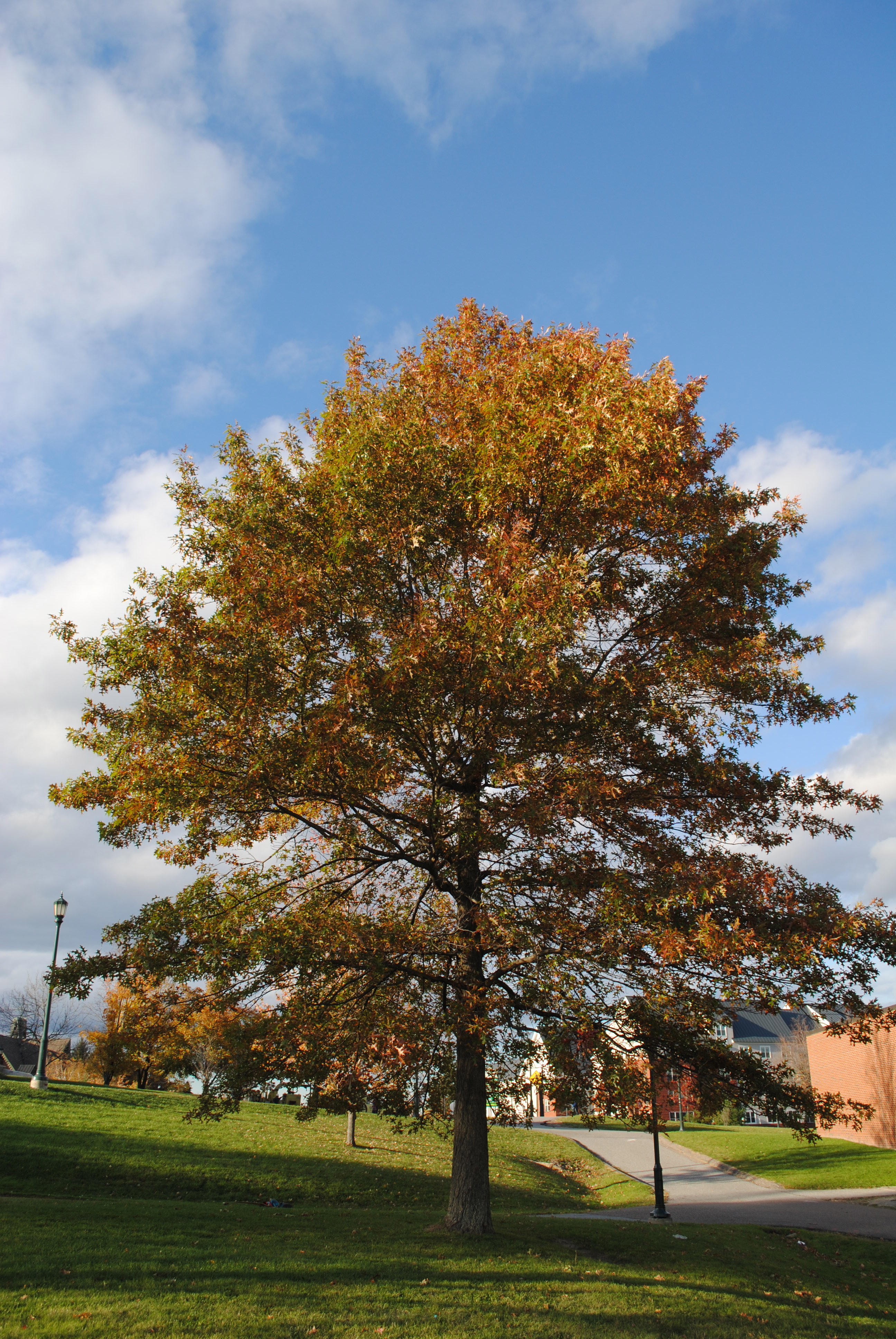Pin Oak : Overview
By Anna Formica
Whether you are strolling through a bustling city park or a quiet college campus, what species of trees are around you? Can you identify the trees as pin oaks? If not, you will be able to very soon. In these urban areas it is very likely you are looking at a pin oak, also known as Quercus palustris. Throughout the eastern United States, the pin oak is used more than any other native oak in landscape. Known for its pendulous lower branches and its rangy height, the pin oak is one of the strongest and fastest growing oak. There are many different theories of the derivation of the name “pin oak”, and the tree is also sometimes referred to as the swamp oak or water oak because of its ability to withstand wet climates. The pin oak's beautiful rustic red color during the fall is a major contributor to the landscape of Vermont, which is known for it’s beautiful autumn foliage.
This profile will touch on many different features of the pin oak, including the characteristics of the tree, natural history, cultural history, adaptation and ornamental usage, growth patterns and complications, and the tree’s benefactors to the University of Vermont’s campus. Hopefully this profile will allow your knowledge of the pin oak to grow fast and strong, just like the tree itself.

